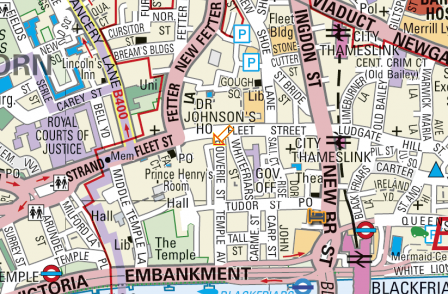
A decade after Reuters moved away from Fleet Street, Press Gazette took a wander down what was once the street of adventure for journalists.
While few journalists now work on the street, it remains steeped in journalism history. And for all the coffee shops and banks, it remains the spiritual home of print journalism to this day.
From the 18th century until the mid 1980s Fleet Street remained the centre of national newspaper journalism and printing in the UK.
The following guide charts Fleet Street’s remaining points of interest for journalists starting at number one, roughly following the numbering which goes up chronologically from east to west and then back again.
Temple Bar traditionally marks the only point where the monarch is allowed to cross into the City of London. It also marks the start of Fleet Street, straddling the boundary between the old legal and media quarters of London. The first trace of newspapers, or the press in general, is the Fleet Street Press coffee house at number 3.
Newspapers originally obtained much of their content from gossip passed around coffee houses.
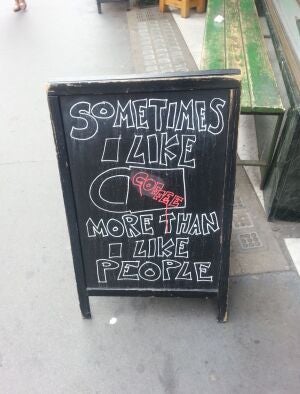
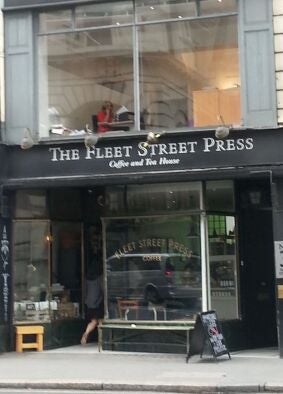
El Vino wine bar (below, credit: Google) is the first famous journalists’ drinking establishment and looks the same as it ever did.
Mirror stalwart Hugh Cudlipp was reputedly among those to be banned from a bar which had a reputation for snobbery, insisting that male customers wore suits and ties and banning women from ordering drinks at the bar until into the 1980s.
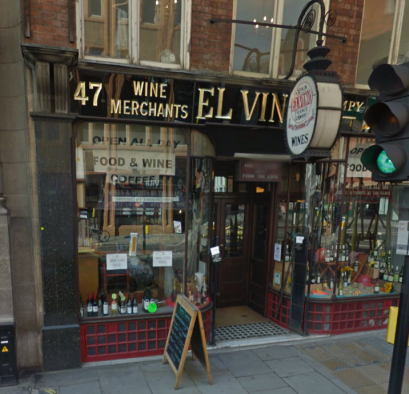
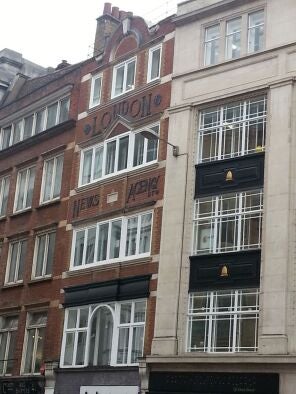
Further along is the site of the Mitre Tavern (Samuel Johnson’s local) and the building of the former London News Agency, a photo and text agency established in 1893 that moved out in the 1970s.
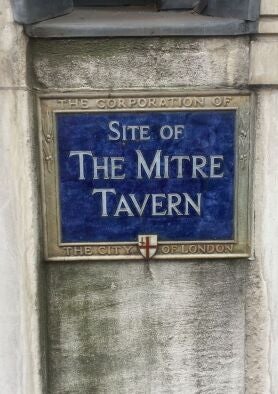
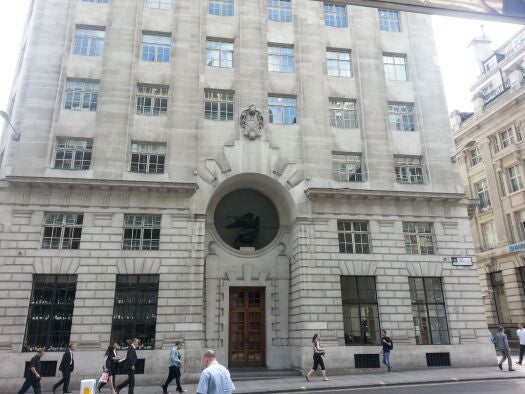
The former Reuters building, where the news agency was based from 1939 to 2005, is now home to The Metro publishing group (not to be confused with the Metro newspaper) and Lutyens restaurant. It was built in 1939 and designed by Edwin Lutyens (who also designed Broadcasting House for the BBC).
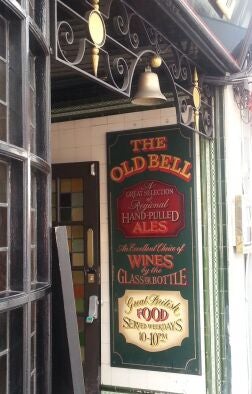
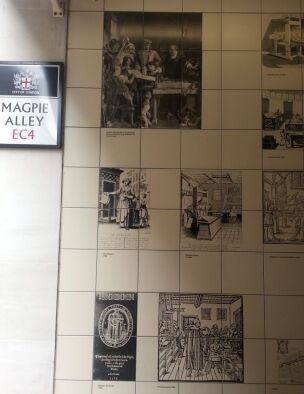
On the right is Bouverie Street, where The Sun was first printed in 1964 (replacing the Daily Herald). Here there is also a plaque to the essayist William Hazlitt.
Off Bouverie Street you can find the Magpie Alley mural to printing, documenting the trade since Caxton’s printing press as first set up in London in the 15th century.
Further along is the Old Bell Tavern (designed by Sir Christopher Wren for builders working on nearby St Bride’s Church). According to the Old Bell website, a printing press operated upstairs in the 16th century.
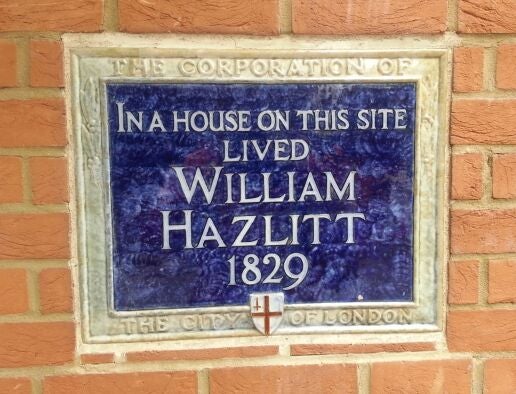
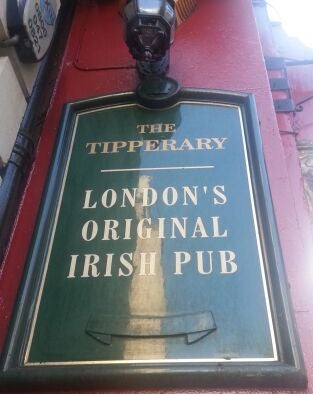
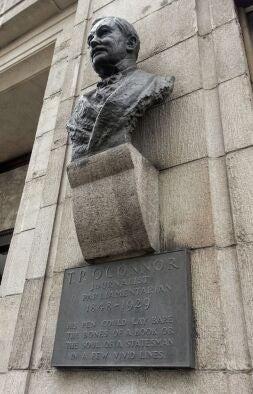
Back on Fleet Street, particularly noticeable are the various dedications to journalists. The first of these is near the Tipperary pub (which claims to be the first Irish pub outside Ireland), to TP O’Connor. The Irish journalist lived from 1848 to 1929, founded four publications and was the only ever Irish Nationalist MP to have a seat in England.
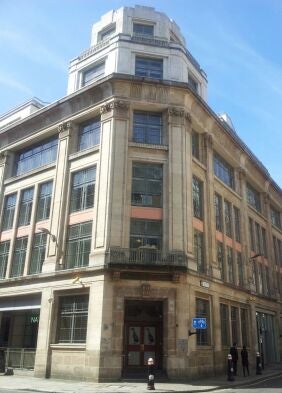
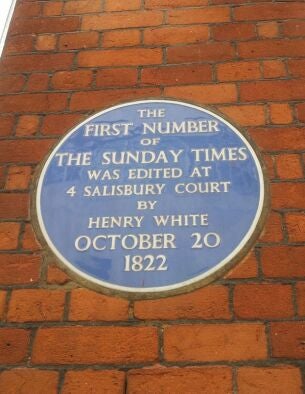
Down two nearby streets are some less conspicuous pieces of history. Whitefriars St hosts another famous journalist watering hole, The Harrow, which still has a room named after famous Daily Mail journalist Vincent Mulchrone.
Off it, Salisbury Court has a plaque (below) commemorating the publication of the first ever print-edition of The Sunday Times there, and another plaque commemorating the birthplace of diarist Samuel Pepys. Salisbury Court is also the birthplace of Press Gazette, founded in 1965 by Colin Valder.
The road turns into Carmelite Street, where the former Northcliffe House (below left), the Daily Mail’s HQ, used to be.
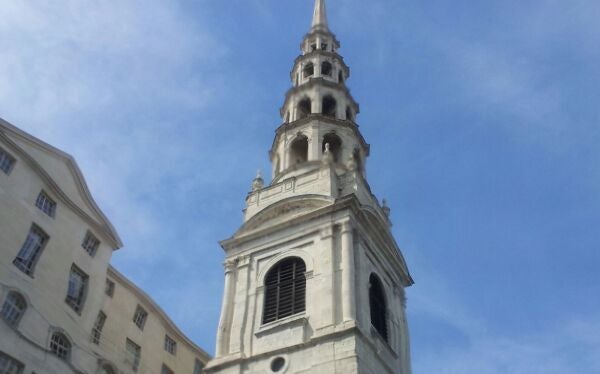
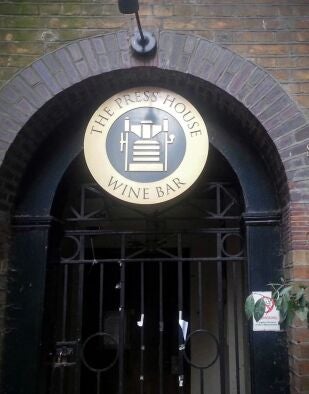
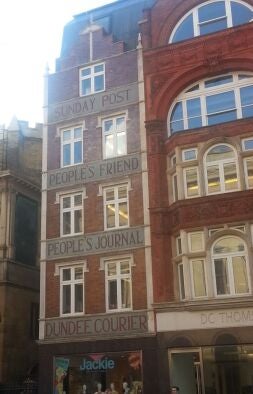
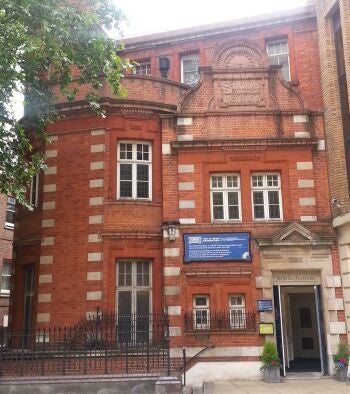
Back on Fleet Street, nestled between the old Reuters building and number 88, is St Bride’s Avenue, which leads to St Bride’s Church – which still describes itself as the journalists’ church. Its spire was reputed to be the template for what has become the traditional wedding cake. Underneath St Bride’s is the Press House Wine Bar (now closed).
Behind St Bride’s Church, on St Bride’s Passage, is the St Bride Foundation – which includes a library dedicated to the world of printing.
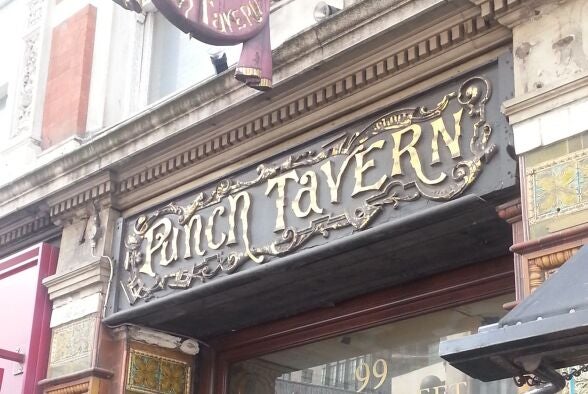
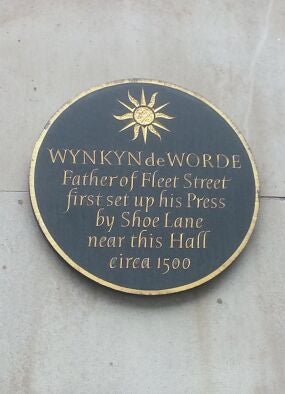
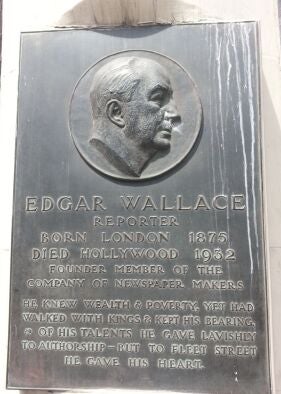
Almost next door to the Old Bell is another famous Fleet Sreet pub, the Punch Tavern.
The landlord changed its name from the Crown and Sugarloaf to The Punch in the 19th century because the magazine’s staff spent so much time there.
Across Ludgate Circus (where the Daily Courant – see below – was printed) and a short walk up Ludgate Hill at Stationers’ Hall, is a plaque to Wynkyn de Worde, the first printer to set up business on Fleet Street in the 15th century.
On Ludgate Circus is a plaque to Edgar Wallace (1875 to 1932), a former reporter for Reuters and the Daily Mail who became a hugely successful crime writer and wrote the script for the 1933 film King Kong.
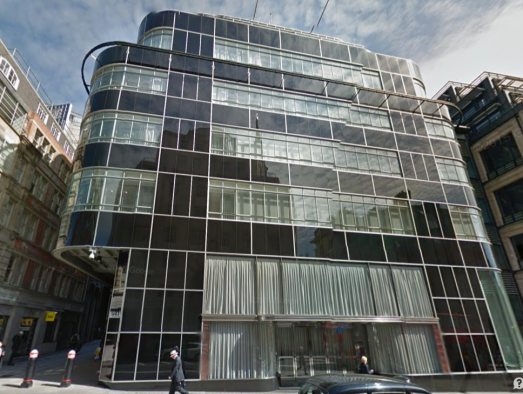
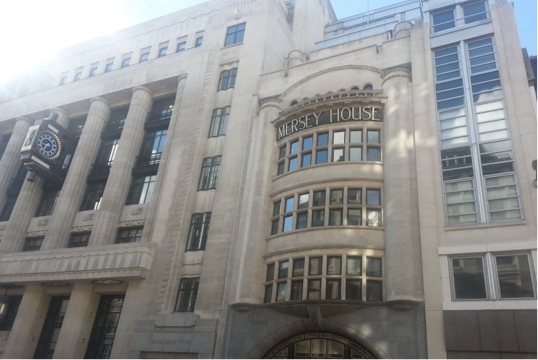
Across the street from the Punch are the two most imposing former newspaper buildings on Fleet Street.
The Daily Express’s 1932 glass and steel former home (they moved in 1989) is grade II* listed and was designed by Ellis & Clark. It jostles with neighbouring Peterborough House, the home of The Daily Telegraph until 1987. These art deco press cathedrals now house banks, and rival the reverent spires of St Bride’s. The Telegraph’s staff used to kick back at the neighbouring King & Keys pub (now a Pret).
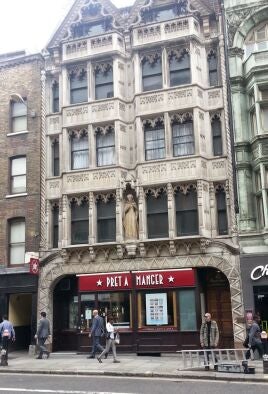
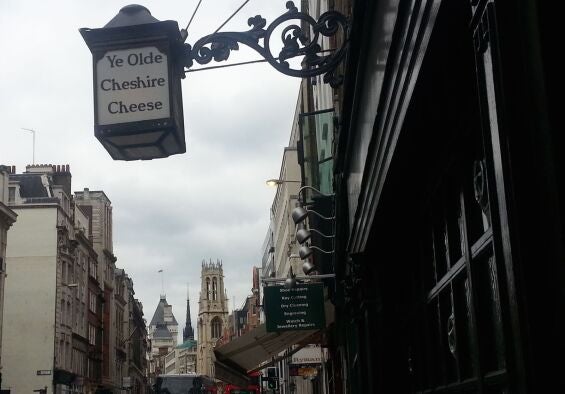
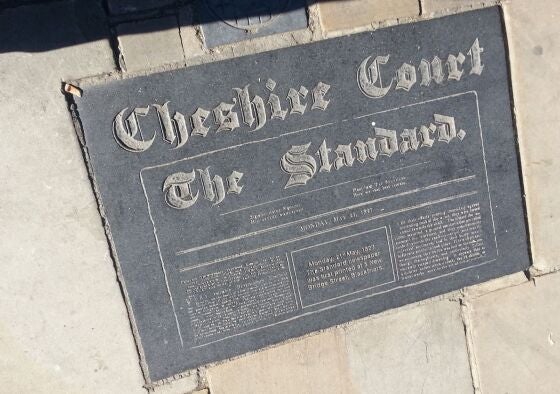
Going west, Ye Olde Cheshire cheese pub is yet another drinking den with writing history, playing host to the likes of WB Yeats, GK Chesterton and Arthur Ransome over the years. A pub has stood at this site since 1538. Cheshire Court outside it bears a plaque to the the Evening Standard (actually published in Blackfriars).
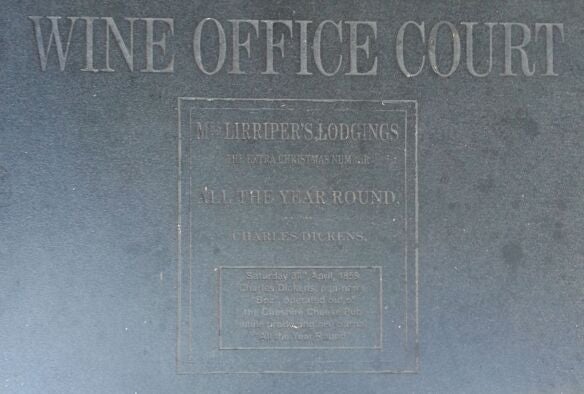
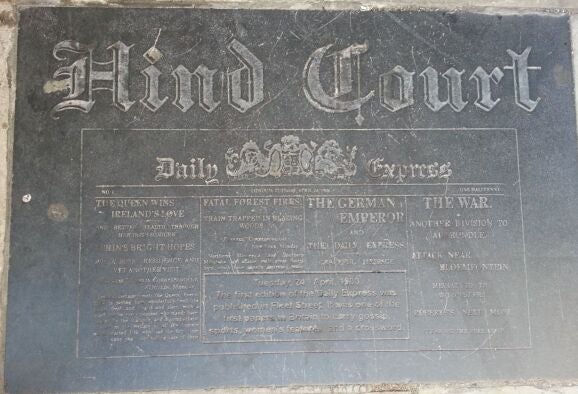
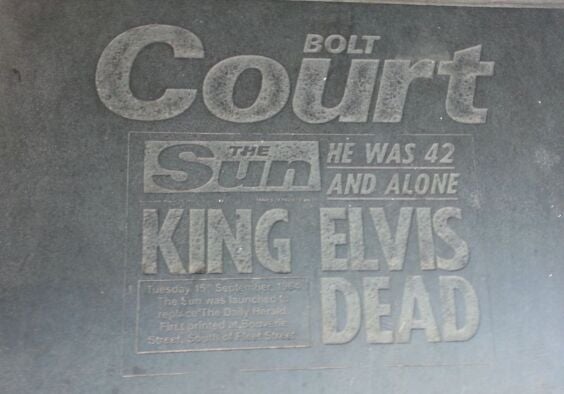
Then we have a series of Plaques on the pavements. The first outside Wine Office Court is to Charles Dickens (who worked for a number of years as editor of the Daily News), one outside Hind Court is dedicated to the Daily Express, one outside Bolt Court is dedicated to The Sun (see Bouverie Street for its location) and there is a plaque to the internet (heralding the end of printed news) outside St Dunstan’s Court.
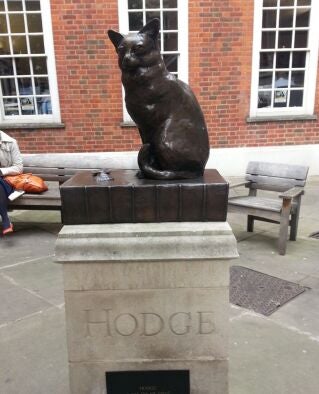
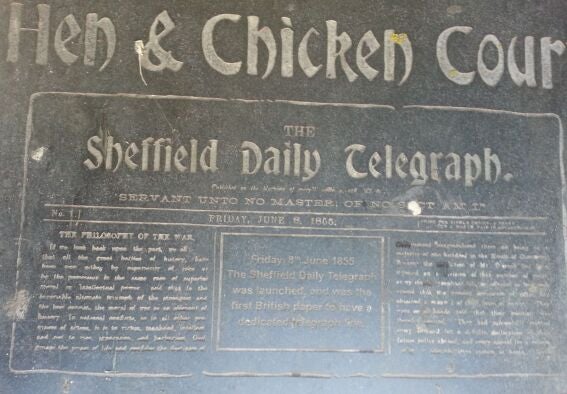
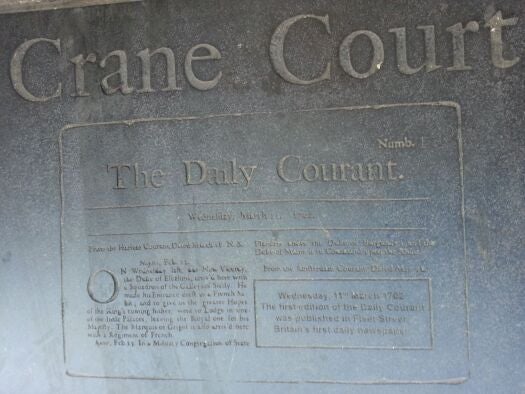
Johnson’s dictionary is commemorated outside Johnson’s Court, an alley which leads to Dr Johnson’s house (now a museum) in Gough Square. Outside his house is a dedication to his inspirational cat, Hodge.
Back on Fleet Street there is a plaque to to the sans printing font (and the printer R. Taylor who popularised it and worked in the Red Lion Court), and another to the Sheffield Daily Telegraph (the first ever paper with a Telegraph line) outside Hen & Chicken Court.

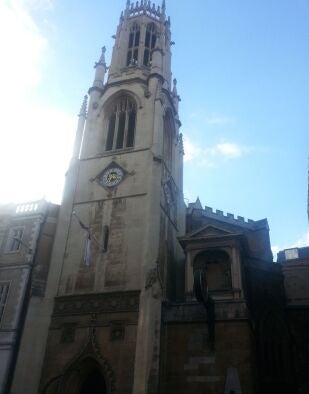
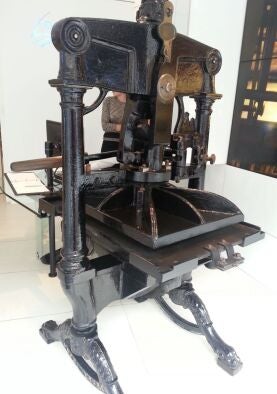

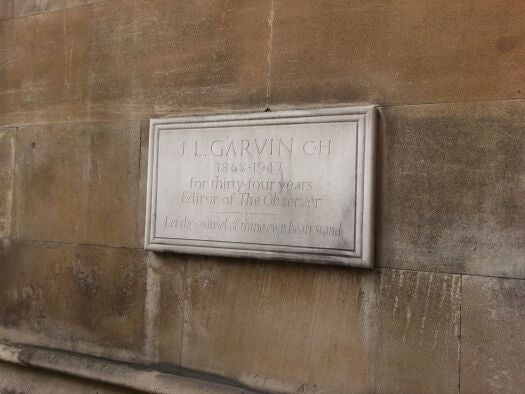
The plaque at Crane Court is arguably the most significant. It commemorates the Daily Courant; the first daily paper in Britain (a claim disputed by the Norwich Post).
It was produced by Elizabeth Mallet in 1702-1735, and consisted of a single page of news with adverts overleaf.
It reported a story on 14 April 1785 about a man murdered after a visit to the barber.
It is thought to have been the inspiration behind Victorian penny dreadful Sweeney Todd (allegedly a resident of 183 Fleet St). On the corner of Fetter Lane and Fleet Street is the red brick home of Exaro, a news agency dedicated to investigating events not covered in the mainstream media.
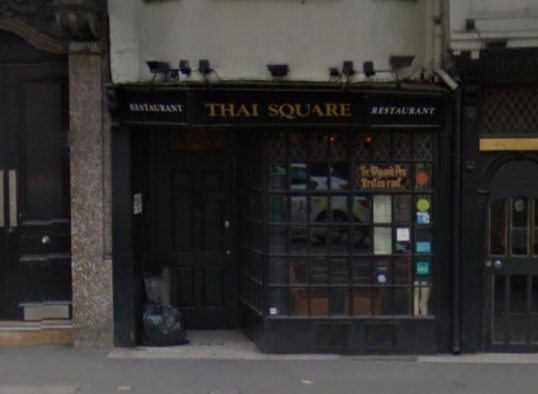
Across Fetter Lane are the offices of DC Thompson & Co, a Dundee Based publishing company, responsible for The Sunday Post, the Beano comic and the Press & Journal, the oldest paper in Scotland.
The Sunday Post maybe the only newspaper to still have journalists based on Fleet Street. Pictured below are its offices and an old printing press which sits in its reception area.
Further on, we reach the Church of St Dunstan in the West.
Outside it is a memorial to Lord Northcliffe, a former proprietor of The Daily Mail, and a plaque to former Observer editor JL Garvin.
It may now be 30 years since Fleet Street was still the centre of UK national newspaper journalism. But there is still much to see there for anyone with an interest in the history of our trade.
If we missed out any points of interest, or made any mistakes in this round-up, please email pged@pressgazette.co.uk.
More Fleet Street
Email pged@pressgazette.co.uk to point out mistakes, provide story tips or send in a letter for publication on our "Letters Page" blog
